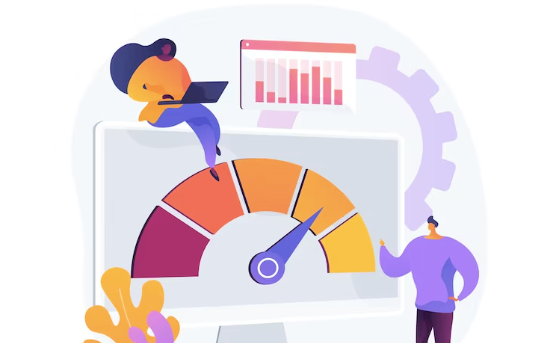PageSpeed Insights is a web performance analysis tool developed by Google. It’s designed to evaluate the speed and user experience of a web page and provide detailed recommendations for improvement. The tool uses a combination of lab data (based on Google’s Lighthouse performance analysis) and real-world field data (from the Chrome User Experience Report) to assess a webpage’s performance comprehensively.
Using PageSpeed Insights Effectively
Let’s explore how to use PageSpeed Insights effectively to enhance your website’s performance.
Access PageSpeed Insights
Start by visiting the PageSpeed Insights website. Once there, you’ll find a straightforward interface that allows you to enter your website’s URL for analysis.
Run the Analysis
After entering your website’s URL, click the “Analyze” button. PageSpeed Insights will then assess your website’s performance for both mobile and desktop devices.
Review the Results
PageSpeed Insights will provide your website with a performance score on a scale of 0 to 100, with scores above 90 considered excellent. It will also offer recommendations for improvement.
View Recommendations
Scroll down to see specific recommendations for enhancing your website’s speed and performance. These suggestions may include optimizing images, leveraging browser caching, minimizing server response times, and eliminating render-blocking resources.
Prioritize Fixes
Not all recommendations are of equal importance. Prioritize fixes based on their potential impact and feasibility. Some fixes may require technical expertise, while others can be implemented relatively easily.
Implement Changes
Work with your web development team or use content management system (CMS) tools to implement the recommended changes. This may involve code optimization, image compression, server configuration adjustments, and more.
Re-Test Regularly
Return to PageSpeed Insights after making the necessary changes to re-test your website. Ensure that your performance score improves, and continue to refine your site’s speed until it meets your desired standards.
Read: A Comprehensive Guide To Core Web Vitals Assessment
Additional Tips for Website Optimization
While PageSpeed Insights is an invaluable tool, here are some additional tips and strategies for optimizing your website’s performance:
- Content Delivery Network (CDN): Utilize a content delivery network to distribute your website’s content across multiple servers worldwide. This reduces latency and ensures faster loading times for users in different geographical locations.
- Mobile Optimization: Optimize your website for mobile devices to ensure fast loading on smartphones and tablets. Responsive design and technologies like Accelerated Mobile Pages (AMP) can be highly beneficial.
- Regular Testing and Monitoring: Continuously monitor your website’s speed and performance using a variety of tools beyond PageSpeed Insights. Tools like GTmetrix, Pingdom, and WebPageTest can provide additional insights and performance data.
- Server Performance: Invest in reliable web hosting with sufficient resources to handle your website’s traffic. Consider using a content management system (CMS) optimized for speed and efficiency.
- Image Optimization: Compress and optimize images to reduce their file sizes without compromising quality. Use modern image formats like WebP for improved performance and user experience.
- Minimize HTTP Requests: Reduce the number of HTTP requests by combining and minimizing CSS and JavaScript files. Implement asynchronous loading for non-essential scripts to prevent them from blocking page rendering.
Read: Key On-Page SEO Factors You Need To Implement Right Now
Conclusion
In the digital age, website speed and performance are of paramount importance. Google’s PageSpeed Insights offers valuable insights and recommendations to help you optimize your website for speed, resulting in improved user experiences, higher search engine rankings, and increased conversions.
Regularly monitoring and optimizing your website’s performance is an ongoing process that can have a significant impact on your online success. By prioritizing speed and user experience, you can stay ahead in the competitive online landscape, keep your visitors engaged, and drive your online objectives to new heights.

